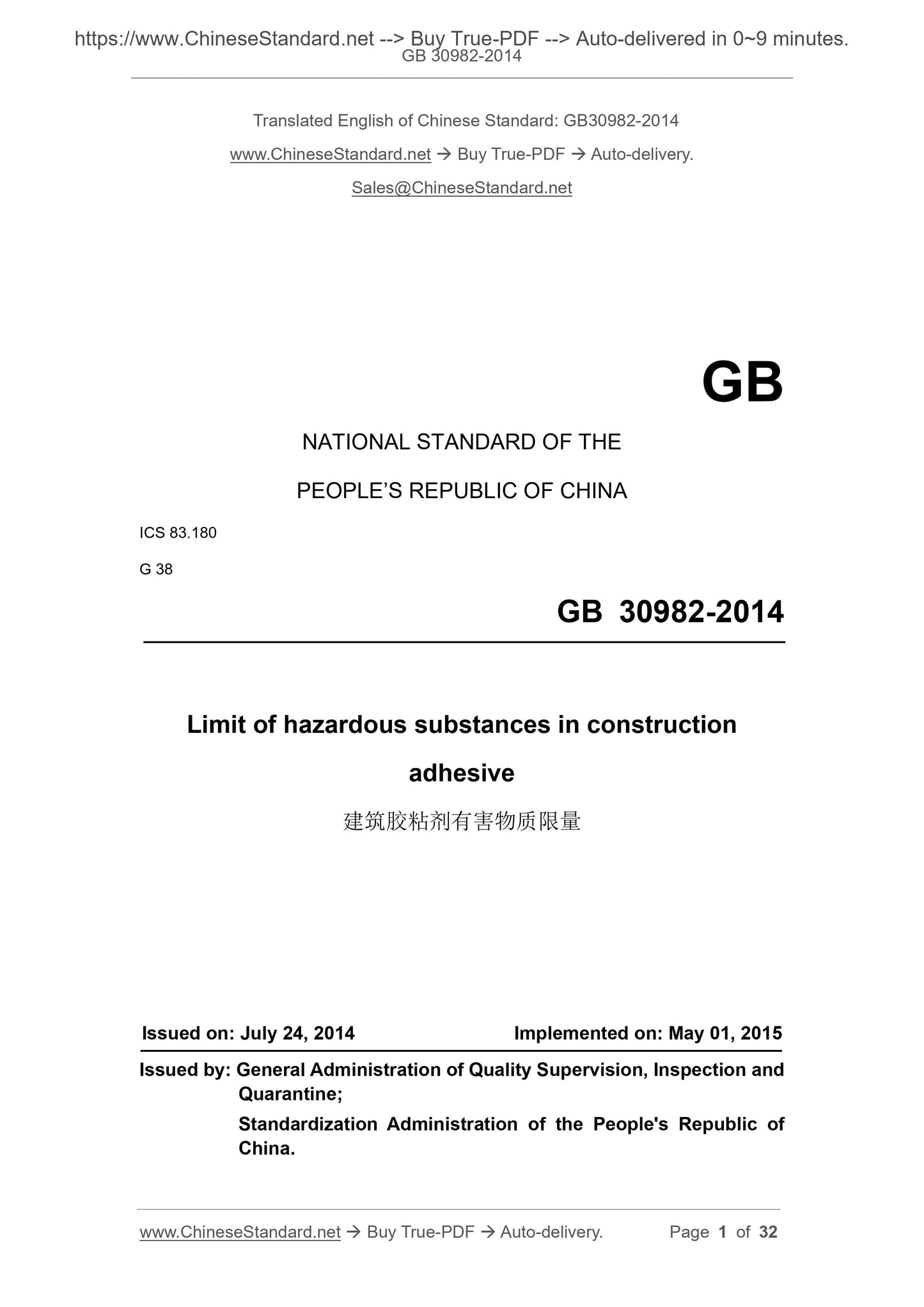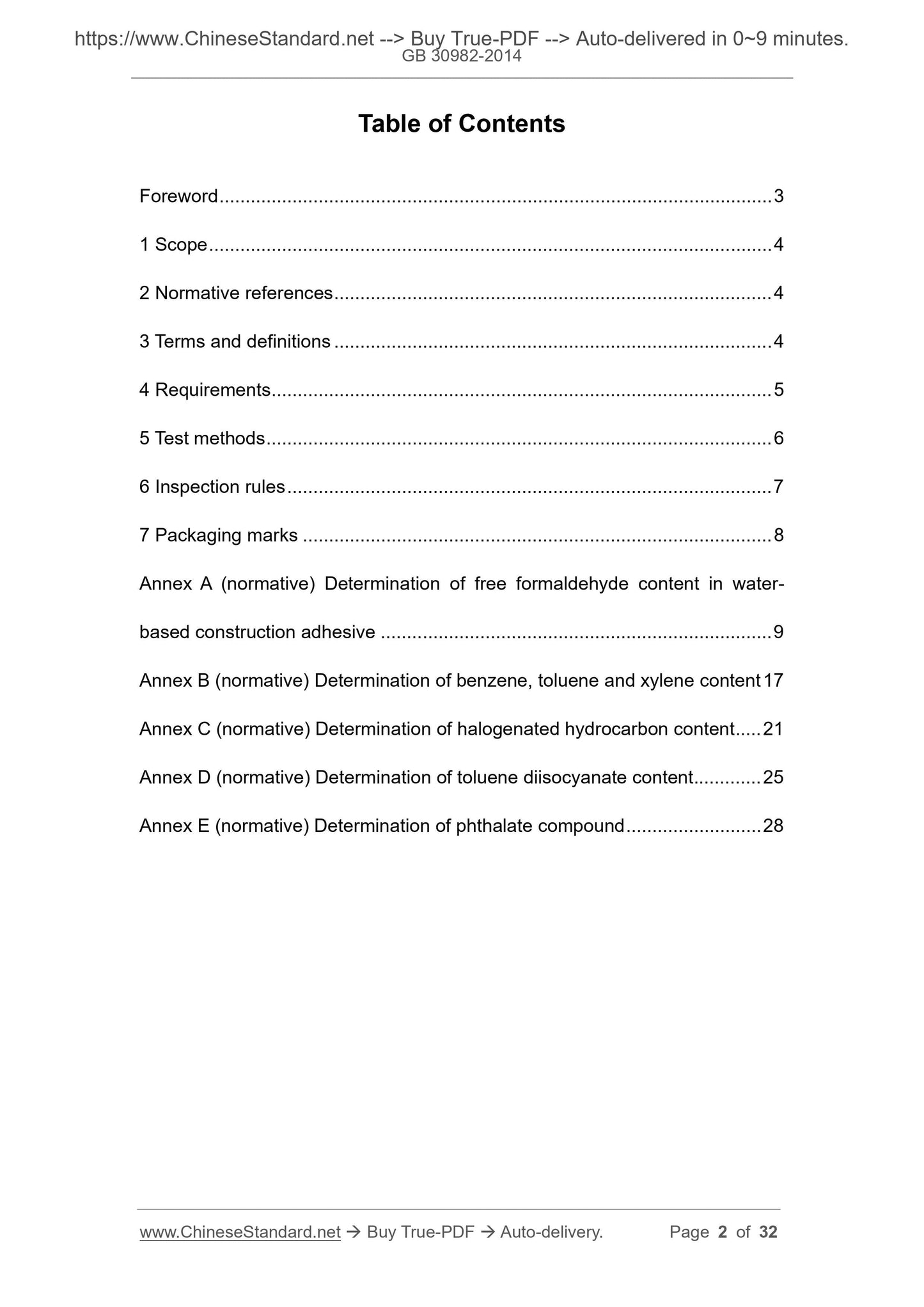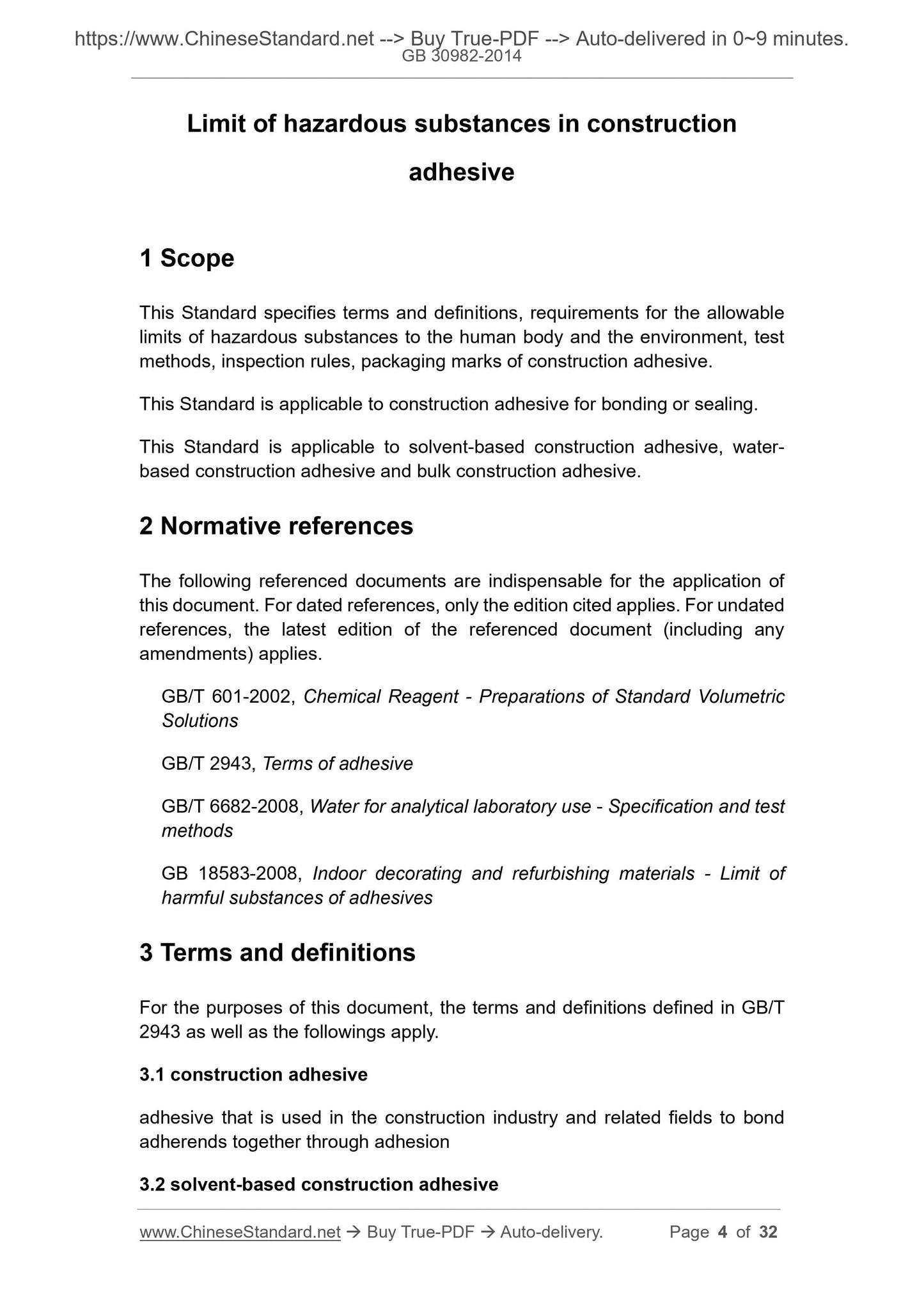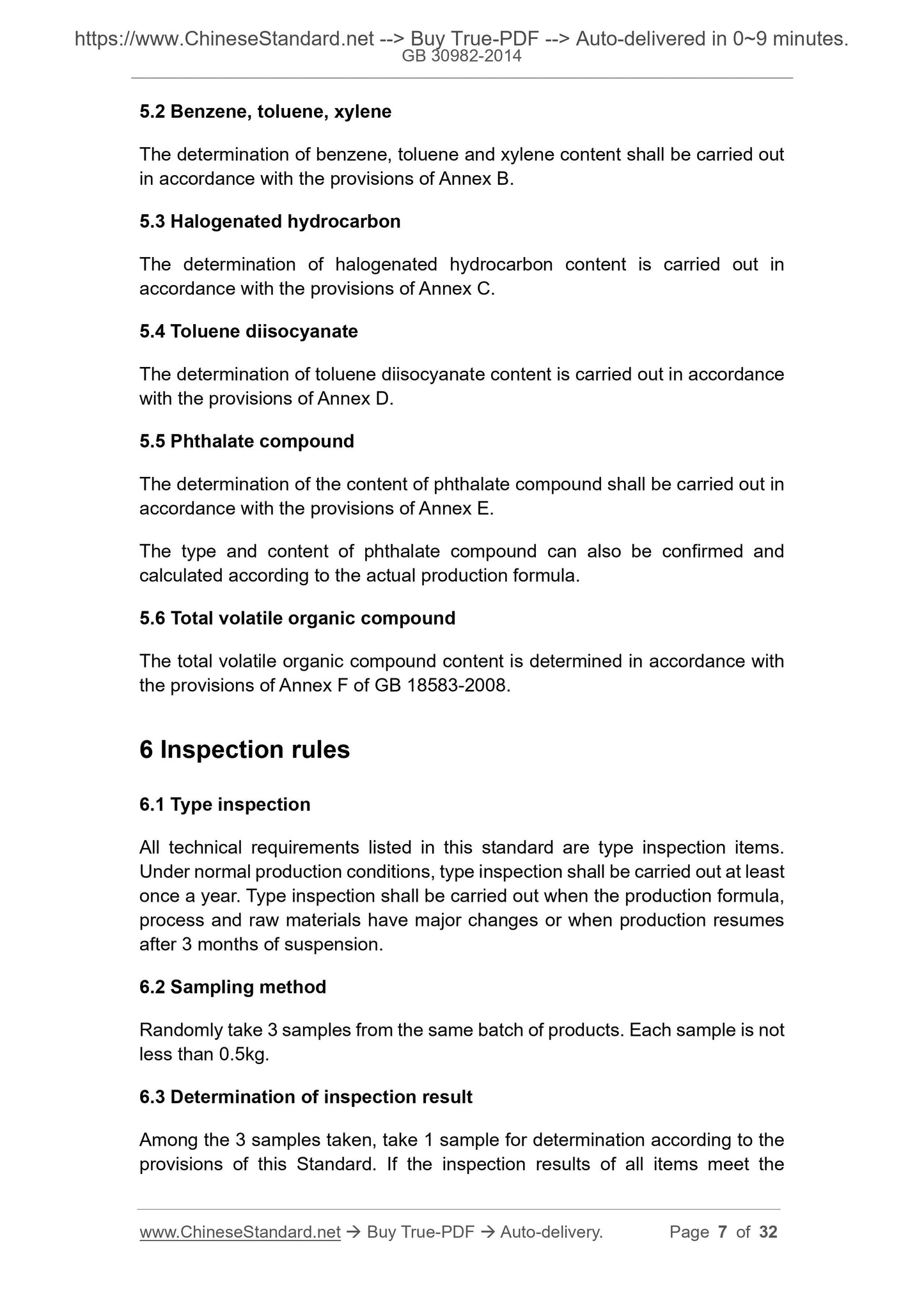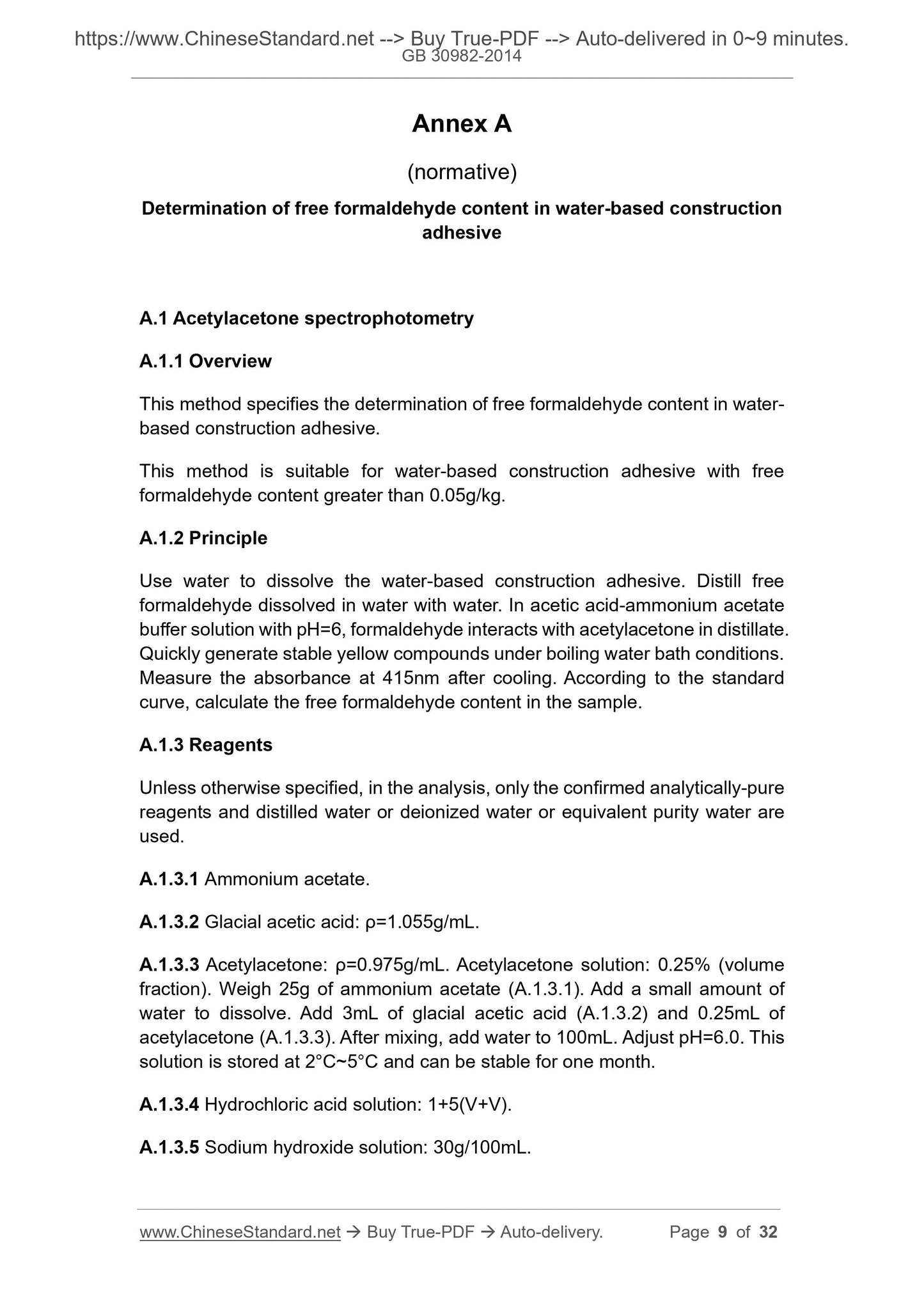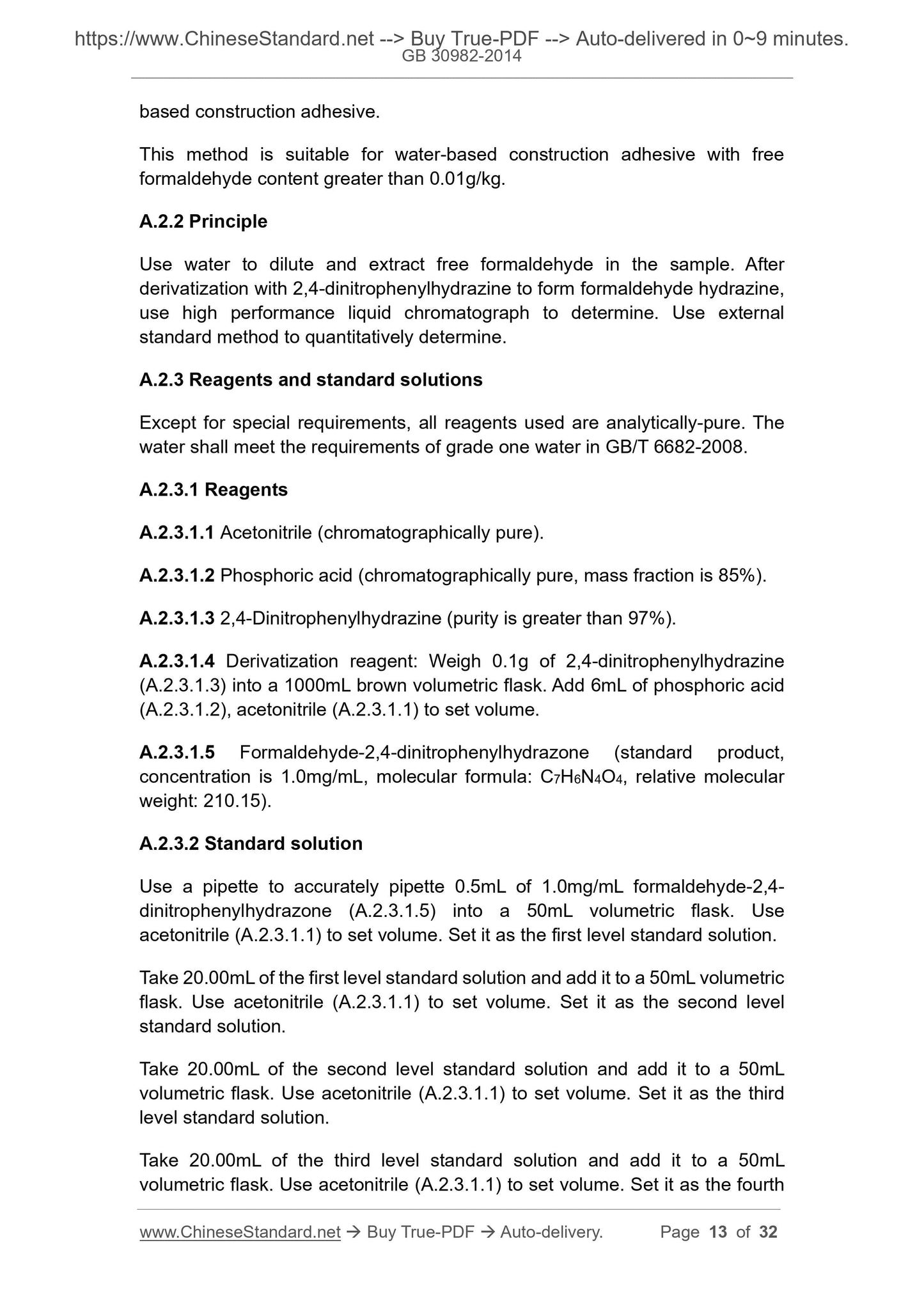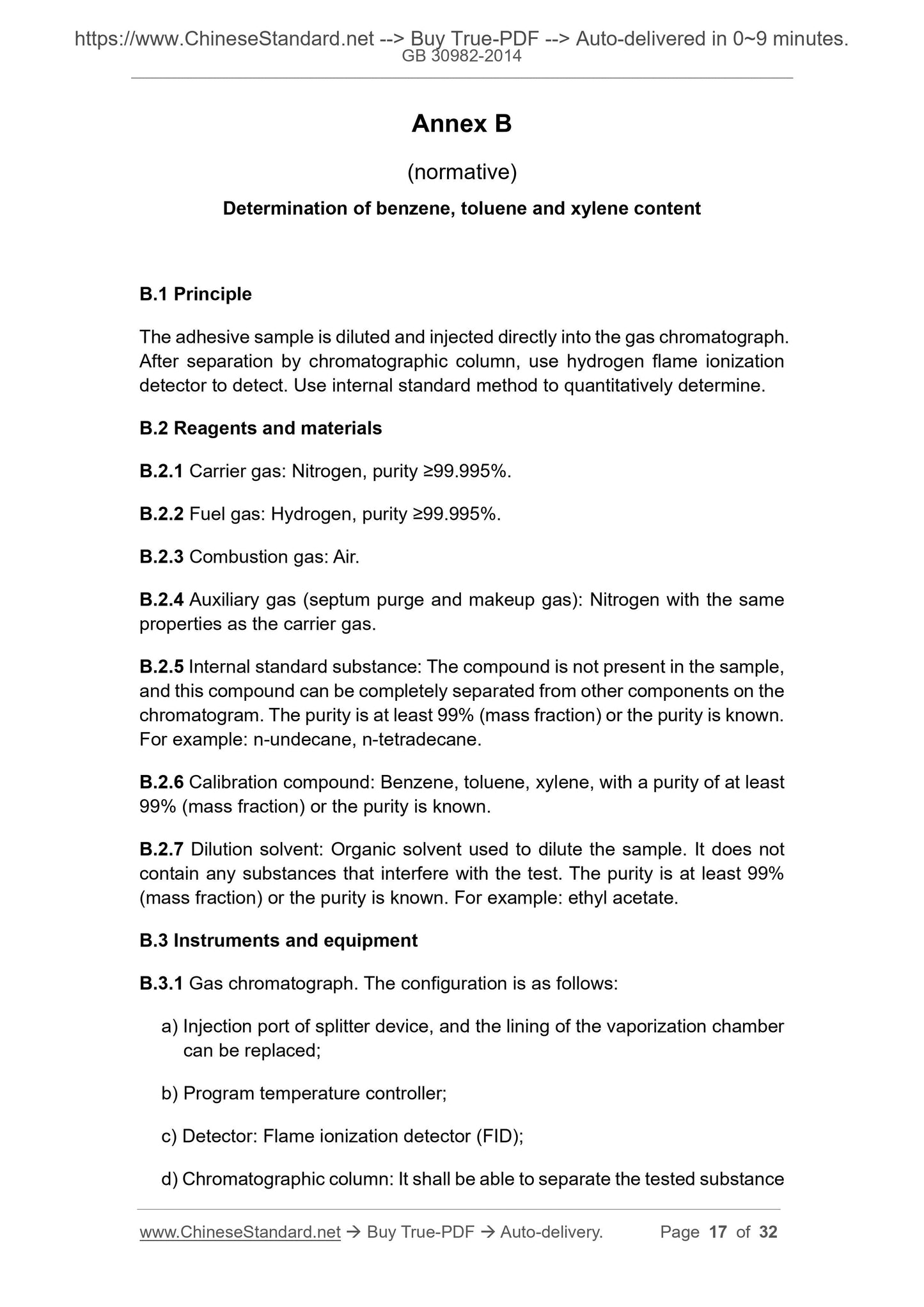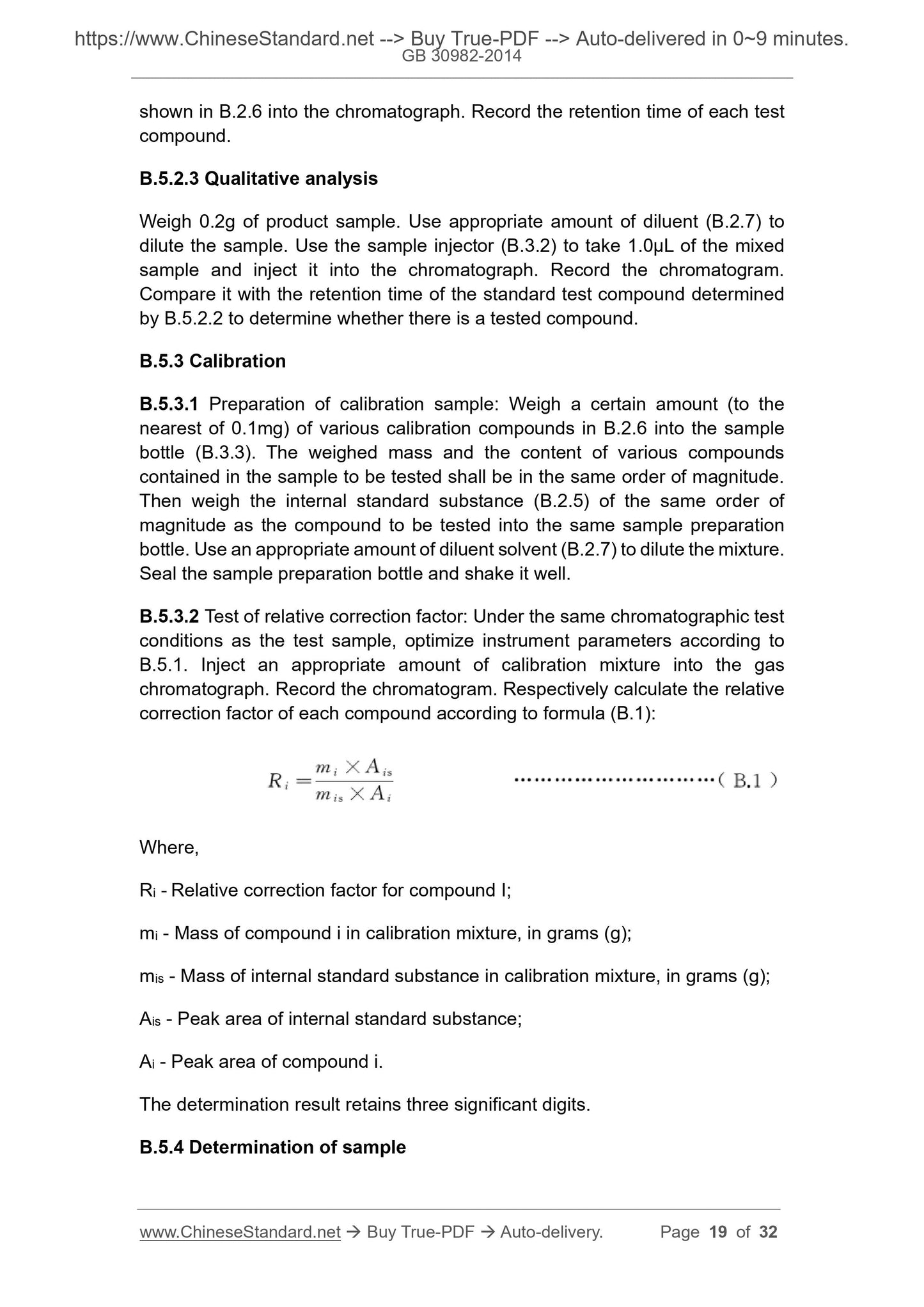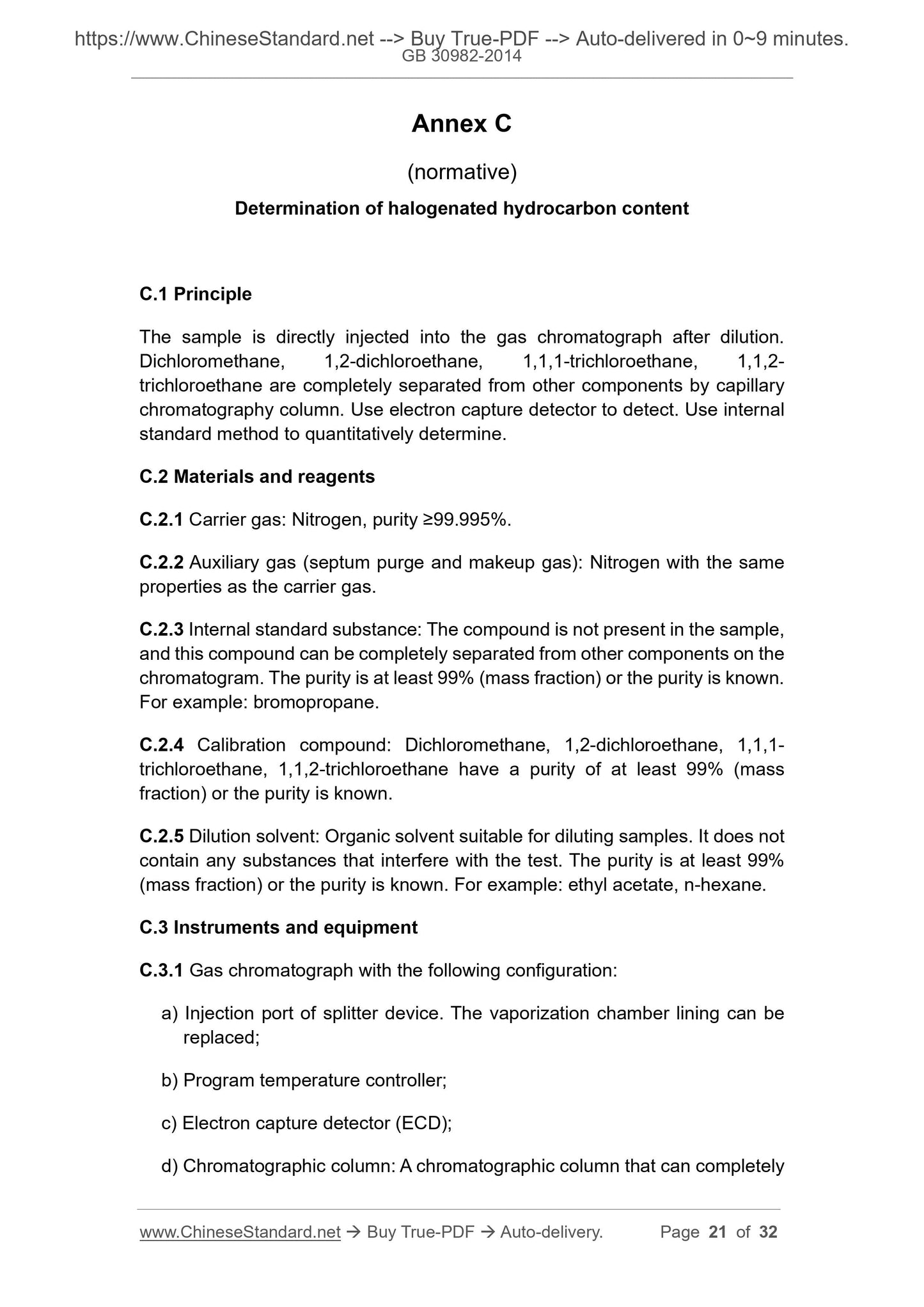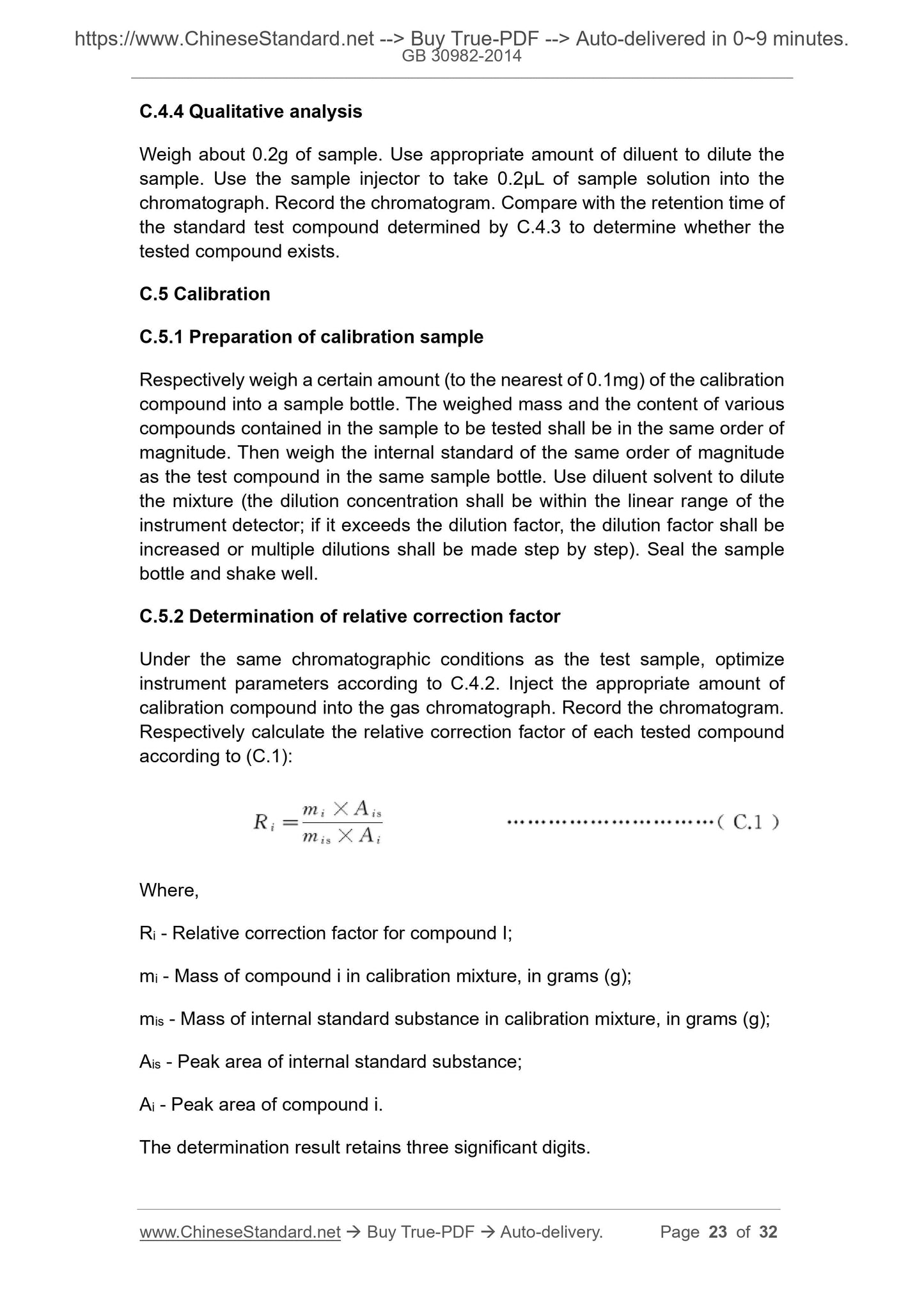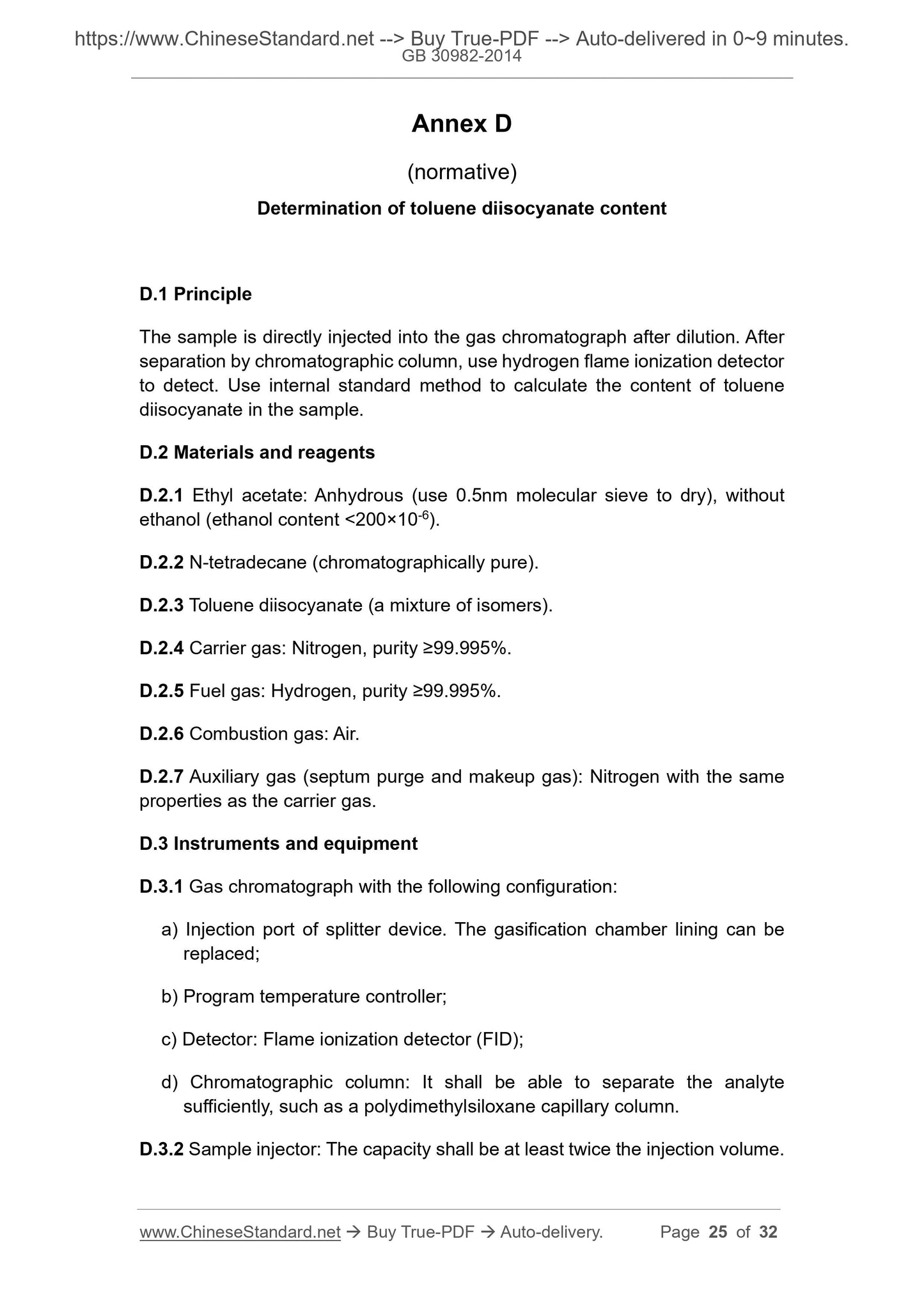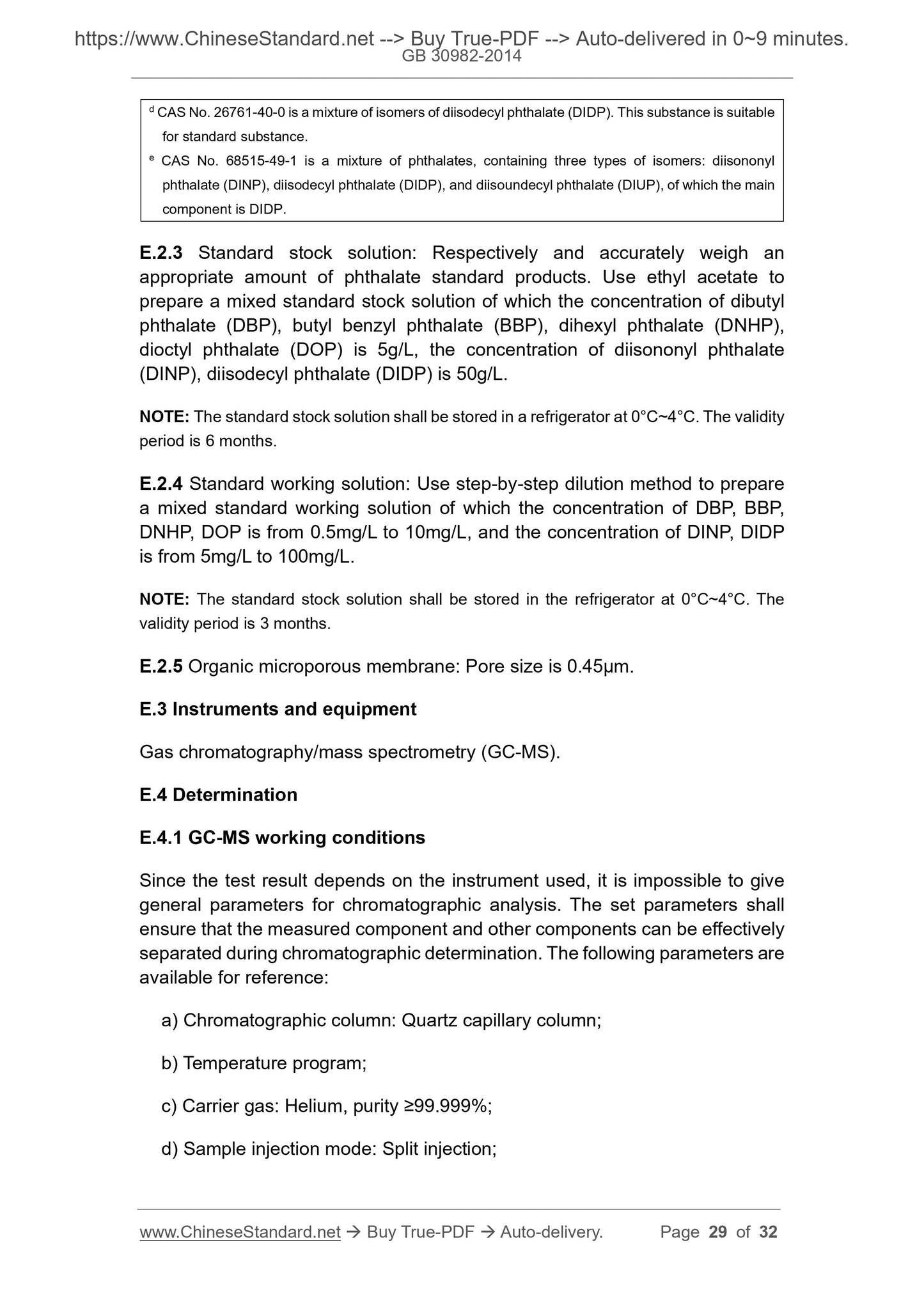1
/
of
12
www.ChineseStandard.us -- Field Test Asia Pte. Ltd.
GB 30982-2014 English PDF
GB 30982-2014 English PDF
Regular price
$315.00
Regular price
Sale price
$315.00
Unit price
/
per
Shipping calculated at checkout.
Couldn't load pickup availability
GB 30982-2014: Limit of hazardous substances in construction adhesive
Delivery: 9 seconds. Download (and Email) true-PDF + Invoice.Get Quotation: Click GB 30982-2014 (Self-service in 1-minute)
Newer / historical versions: GB 30982-2014
Preview True-PDF
Scope
This Standard specifies terms and definitions, requirements for the allowablelimits of hazardous substances to the human body and the environment, test
methods, inspection rules, packaging marks of construction adhesive.
This Standard is applicable to construction adhesive for bonding or sealing.
This Standard is applicable to solvent-based construction adhesive, water-
based construction adhesive and bulk construction adhesive.
Basic Data
| Standard ID | GB 30982-2014 (GB30982-2014) |
| Description (Translated English) | Limit of hazardous substances in construction adhesive |
| Sector / Industry | National Standard |
| Classification of Chinese Standard | G38 |
| Classification of International Standard | 83.180 |
| Word Count Estimation | 22,213 |
| Date of Issue | 7/24/2014 |
| Date of Implementation | 5/1/2015 |
| Quoted Standard | GB/T 601-2002; GB/T 2943; GB/T 6682-2008; GB 18583-2008 |
| Regulation (derived from) | National Standards Bulletin No. 19, 2014 |
| Issuing agency(ies) | General Administration of Quality Supervision, Inspection and Quarantine of the People's Republic of China, Standardization Administration of the People's Republic of China |
| Summary | This standard specifies the terms and definitions for construction adhesives, humans and the environment of hazardous substances allowable limit requirements, test methods, inspection rules, packaging and marking. This standard applies to construction adh |
Share
